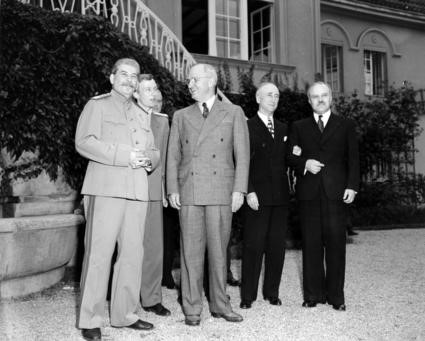
Background
World War II was fought by millions of people in all corners of the world. There were battles and military posts in surprising places. The Caribbean and Central America, Greenland, Alaska and the Aleutian Islands, Iraq, Syria, Burma and the Arctic are a few of the little known places that were involved. Every major country of the time was involved in the war.
Conflict in Asia began well before the official start of World War II. Seeking raw materials to fuel its growing industries, Japan invaded the Chinese province of Manchuria in 1931. By 1937 Japan controlled large sections of China, and war crimes against the Chinese became commonplace. In 1939, the armies of Japan and the Soviet Union clashed in the area of the Khalkin Gol river in Manchuria. This battle lasted four months and resulted in a significant defeat for the Japanese.
The United States, along with other countries, criticized Japanese aggression but shied away from any economic or military punishments. Relations between the U.S. and Japan worsened further when Japanese forces took aim at Indochina with the goal of capturing oil-rich areas of the East Indies. Responding to this threat, the United States placed an embargo on scrap metal, oil and aviation fuel heading to Japan and froze Japanese assets in the U.S. Furthermore, the U.S. demanded that the Japanese withdraw from conquered areas of China and Indochina. Japan, sensing conflict was inevitable, began planning for an attack on Pearl Harbor by April, 1941. The alliance systems of Japan, Germany and Italy were put into action by this time, but Russo-Japanese relations were cordial.
The Japanese bombing of Pearl Harbor on December 7, 1941 brought the United States officially into World War II. In the surprise attack, Japan sunk several ships, destroyed hundreds of planes and ended thousands of lives. The Japanese goal was to cripple the U.S. Pacific fleet, and they nearly succeeded. President Franklin Roosevelt called the attack “a day which will live in infamy,” and the American people were shocked and angered.
The ensuring war was costly. Years of fighting brought the U.S. armed forces closer and closer to Japan as they “hopped” from one island to another. The Japanese were vicious fighters, however, and every victory cost more time, material and lives. The last major battle, the fight for Okinawa, lasted almost three months and took more than 100,000 Japanese and American lives.
After President Roosevelt died on April 12, 1945, it became Harry Truman’s job to decide how to end the war. The thought of invading Japan gave Truman and his advisors pause. The war had shown that the Japanese were fighting for the Emperor who convinced them that it was better to die than surrender. Women and children had been taught how to kill with basic weapons. Japanese kamikaze pilots could turn planes into guided missiles. The cost of invasion, they knew, would be high.
Upon becoming president, Truman learned of the Manhattan Project, a secret scientific effort to create an atomic bomb. After a successful test of the weapon, Truman issued the Potsdam Declaration demanding the unconditional surrender of the Japanese government, warning of “prompt and utter destruction.” While at the Potsdam Conference, President Truman conversed with Soviet Premier Joseph Stalin in regards to “a new weapon of unusual destructive force.” The United States knew of the Soviets’ planned entry into the Pacific Theater as early as August 15th.
On August 6, 1945, having received no reply to the surrender terms, an American bomber called the Enola Gay dropped “Little Boy,” an atomic bomb, on Hiroshima, Japan. On August 8th, the Soviet Union declared war on Japan and invaded Manchuria and Sakhalin Island. The next day, another American bomber was en route to Japan only this time they were heading for Nagasaki with “Fat Man,” another atomic bomb. Both cities were leveled by the bombs, and shortly after the second bomb fell, Japan surrendered to the United States. The war was finally over.
Today, historians continue to debate the decision to use atomic weapons. To what extent did the Soviet intervention into the Pacific Theater cause Truman to use atomic weapons to end the war?
Key Question
How was the Soviet invasion of Manchuria an influence for the use of atomic weapons?
Directions
Materials
Documents to be examined:
- The Legacy of the Soviet Union Offensives of August 1945, August 13, 2015
- If the Atomic Bomb Had Not Been Used, 1946
- Draft of Potsdam Declaration, July 23, 1945
- Cairo Conference Declaration Appendix, December 1, 1943
- Telegram form Tojo to Sato, July 21, 1945
- Strategic Bombing Survey, 1946
- Letter from Harry S. Truman to Bess W. Truman, July 20, 1945
- Notes by Truman on Potsdam Conference, July 17, 1945
- Map of American and Soviet Zones of Operation
- Harry S. Truman: A Life, 1994
- Memorandum, Third Meeting of Harry Hopkins and other American diplomats with Marshal Joseph Stalin, May 28, 1945
- Transcript of Emperor Hirohito’s speech announcing the acceptance of unconditional surrender
- Political Cartoon, Truman’s Talk Last Night